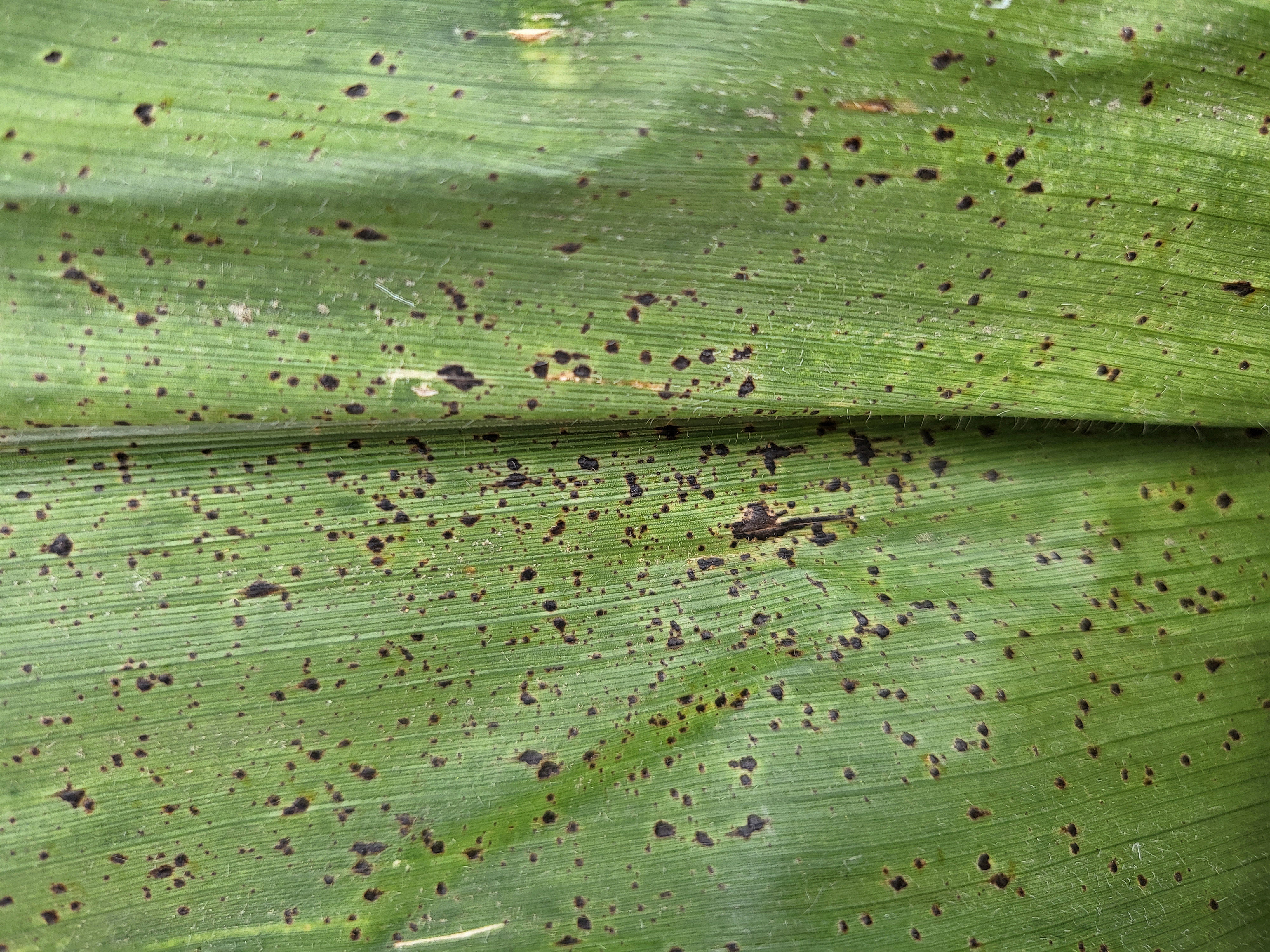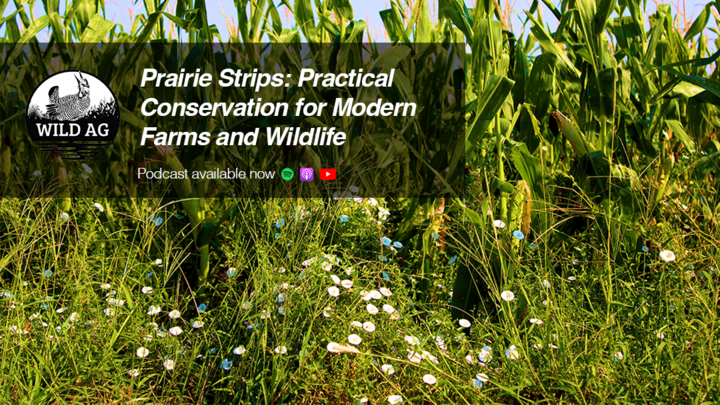Original content created by Dr. Jim Stack, former UNL Extension Plant Pathologist and current Kansas State University Extension Plant Pathologist. Content edited and approved by Dr. Tamra Jackson-Ziems, UNL Extension Plant Pathologist.
Pathogen
Colletotrichum graminicola (Ces.) G. W. Wils. (Teleomorh: Glomerella graminicola Politis). Fungal structures: hyphae, conidia (produced within acervuli, and sclerotia. Black hair-like projections, setae, are commonly observed within acervuli. Occurs throughout the corn belt from the mid-Atlantic states to Nebraska. The pathogen survives in residue on the soil surface, in buried residue, and as sclerotia and hyphae in the soil. Surface residue is the most important source of inoculum.
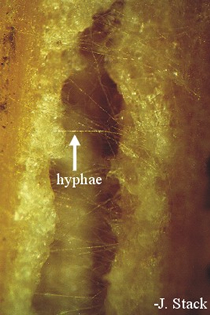
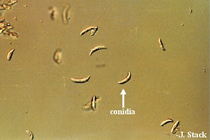
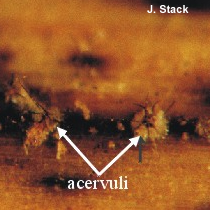
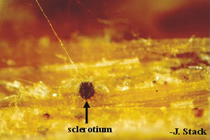
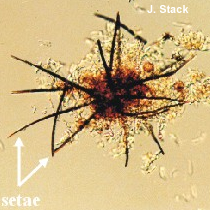
Disease Symptoms
Hybrids and inbreds vary in susceptibility to anthracnose. There are three distinct phases of anthracnose: leaf blight, top die-back, and stalk rot. In Nebraska, leaf blight lesions first appear in early-to-mid June. Immature lesions are not diagnostic and can easily be confused with Gray Leaf Spot or Eye spot. Mature lesions are irregular in shape and can expand to encompass large sections of the leaf. Leaf blight can also occur later in the season following pollination. Top die-back symptoms first appear about one-to-three weeks after tasseling. Affected fields have the appearance of a green band across the middle of the plants. Under the sheath on the stalk surface, black discoloration is evident. With a 20X-magnification hand lens, setae can be seen. Anthracnose stalk rot symptoms of the lower stalk can begin soon after tasseling but surface discoloration and lodging usually occur later. If the stalk is split from top to bottom, discoloration at the nodes may be evident.
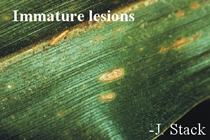

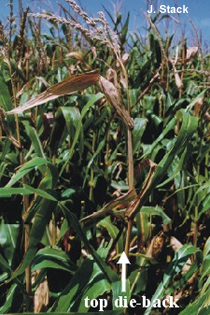
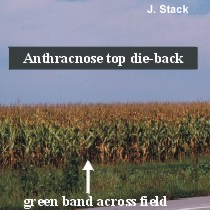
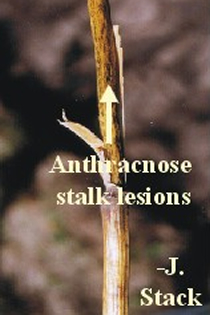
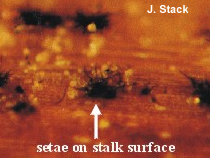
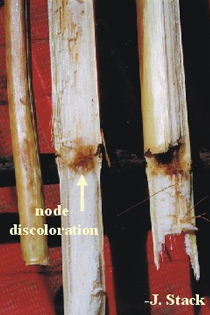
Favorable Environmental Conditions
High temperature and long periods of wet weather favor the leaf blight and top die-back phases.
High temperature and plant stress following pollination favor the stalk rot phase.
Management
Genetic Resistance
Resistant hybrids are commercially available. Resistance to the leaf blight phase is not highly correlated to resistance to the stalk rot phase. If a hybrid is rated as anthracnose-resistant, find out to which phase of the disease it was rated.
Cultural Practices
Tillage can reduce the risk when the residue is incorporated into the soil and decomposition results. Rotation to crops other than corn for at least one year may minimize early season anthracnose, but have little impact on late season disease.
Chemical / Biological Control
No fungicides are effective against the anthracnose pathogen.
